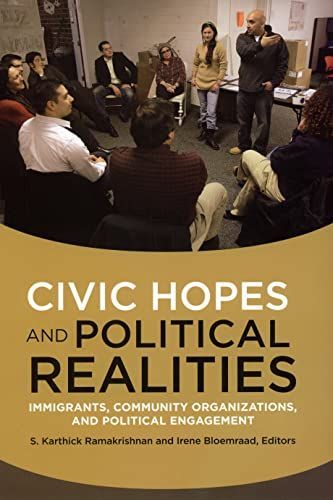
Civic Hopes and Political Realities Immigrants, Community Organizations, and Political Engagement
For many Americans, participation in community organizations lays the groundwork for future political engagement. But how does this traditional model of civic life relate to the experiences of today's immigrants? Do community organizations help immigrants gain political influence in their neighborhoods and cities? In Civic Hopes and Political Realities, experts from a wide range of disciplines explore the way civic groups across the country and around the world are shaping immigrants' quest for political effectiveness. Civic Hopes and Political Realities shows that while immigrant organizations play an important role in the lives of members, their impact is often compromised by political marginalization and a severe lack of resources. S. Karthick Ramakrishnan and Irene Bloemraad examine community organizations in six cities in California and find that even in areas with high rates of immigrant organizing, policymakers remain unaware of local ethnic organizations. Looking at new immigrant destinations, Kristi Andersen finds that community organizations often serve as the primary vehicle for political incorporation—a role once played by the major political parties. Floris Vermeulen and Maria Berger show how policies in two European cities lead to very different outcomes for ethnic organizations. Amsterdam's more welcoming multicultural policies help immigrant community groups attain a level of political clout that similar organizations in Berlin lack. Janelle Wong, Kathy Rim, and Haven Perez report on a study of Latino and Asian American evangelical churches. While the church shapes members' political views on issues such as abortion and same-sex marriage, church members may also question the evangelical movement's position on such issues as civil rights and immigration. Els de Graauw finds that many non-profit organizations without explicitly political agendas nonetheless play a crucial role in advancing the political interests of their immigrant members. Recent cuts in funding for such organizations, she argues, block not only the provision of key social services, but also an important avenue for political voice. Looking at community organizing in a suburban community, Sofya Aptekar finds that even when immigrant organizations have considerable resources and highly educated members, they tend to be excluded from town politics. Some observers worry that America's increasing diversity is detrimental to civic life and political engagement. Civic Hopes and Political Realities boldly advances an alternative understanding of the ways in which immigrants are enriching America's civic and political realms—even in the face of often challenging circumstances.